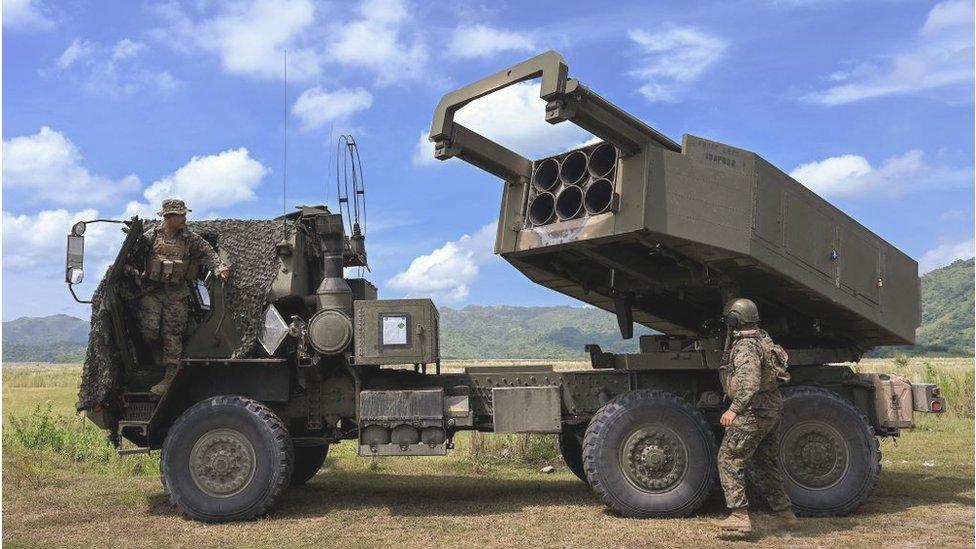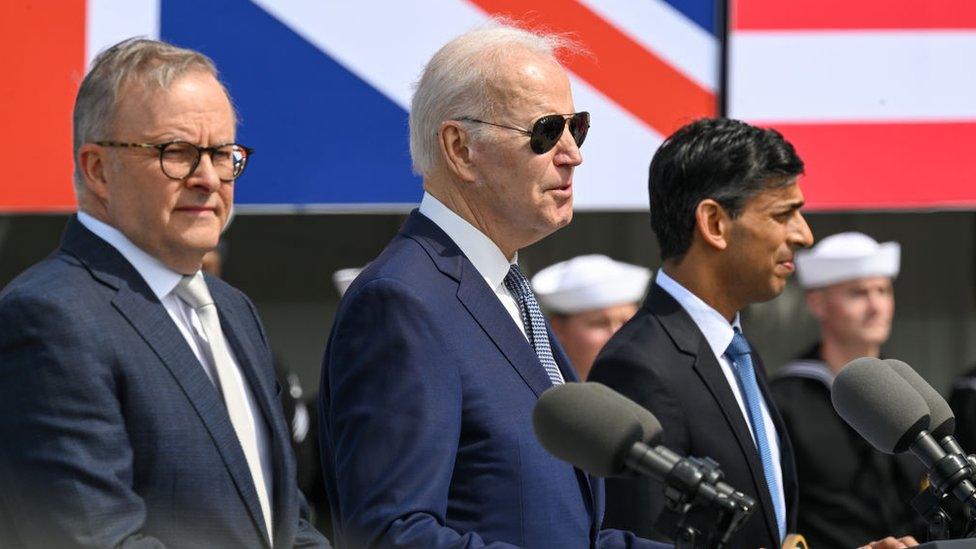Australian defence review plots pivot from armour to missiles
- Published

Australia will fast track plans to acquire the US HIMARS system.
Australia will speed up efforts to buy longer range missiles to counter the growing threat from China, a major defence review says.
It warns the country can no longer be protected by its geographic isolation in the "missile age".
The government will spend some A$19bn ($12bn, £10bn) to deliver the report's immediate recommendations.
The 110-page study is described as the biggest overhaul of Australian defence since World War Two.
The Defence Strategic Review (DSR) comes amid increasing regional tension over China's stance towards Taiwan, which it has repeatedly vowed to take by force if necessary.
The Chinese navy has also established a major presence in the South China Sea, claiming parts of it as its own territory, contrary to international law.
"China's military build-up is now the largest and most ambitious of any country since the end of the Second World War. This build up is occurring without transparency or reassurance to the Indo-Pacific region of China's strategic intent," the report states.
Prime Minister Anthony Albanese said the review would "shape the future rather than waiting for the future to shape us", and its recommendations would make Australia "more self-reliant, more prepared and more secure".
It recommends that Australia's armed forces switch focus from land-based armour to "longer-range strike capability, with munitions built in Australia", Defence Minister Richard Marles said.
"We need to have a defence force which has the capacity to engage in 'impactful projection'," Mr Marles told reporters.
The minister said the acquisition of "precision strike missiles" with ranges in excess of 500km (310 miles) would give the army "the firepower and mobility it needs into the future".
A 2022 think tank report warned of a "worst-case scenario" for Australia's military where China took control of territory in the near region during a possible war over Taiwan.
And Australia's new defence posture was aimed at keeping "a major power adversary like China... as far away as possible", said Australian Strategic Policy Institute (ASPI) analyst Dr Malcolm Davis.
"What we're trying to do is to deter China from using force to achieve its policy objectives, including Taiwan or in the South China Sea. So it is about deterrence. But of course, deterrence can fail, as we saw with Ukraine, so you then have to be ready to respond. What we're investing in will dramatically extend our combat reach," he said.
But he added that while the review was a "step in the right direction", it was not a complete solution.
"We're going down the path of a focused force, designed for impactful projection, that is better suited to the sort of threat that we're facing in this decade and beyond, rather than [one] which tries to do everything. But I think more needs to be done. We need to spend more on defence... and we need to invest in getting [forces] much more rapidly into the field."
The strategic review recommends strengthening Australia's northern defences and giving the ADF greater operating ability from northern bases.
And Australia will fast track plans to acquire the land-based High Mobility Artillery Rocket (HIMARS) system, used to great effect by Ukraine's army to stem the Russian advance.
To fund Australia's new priorities, a number of projects including plans for new self-propelled guns and ammunition supply vehicles for the army, will be shelved.
Mr Marles said the review also highlighted the importance of keeping a "continuous shipbuilding capability in this country".
It also recommended acquiring long-range anti-ship missiles for fighter aircraft, but said the new US B-21 Raider stealth bomber was currently "not a suitable option".
Last month, the US State Department approved the sale of 220 cruise missiles to Australia in a deal valued at $895m.
The non-nuclear missiles will be used by the Virginia-class submarines that Australia will acquire from the US under the Aukus defence pact agreed by Australia, the UK and the US.
- Published14 March 2023
